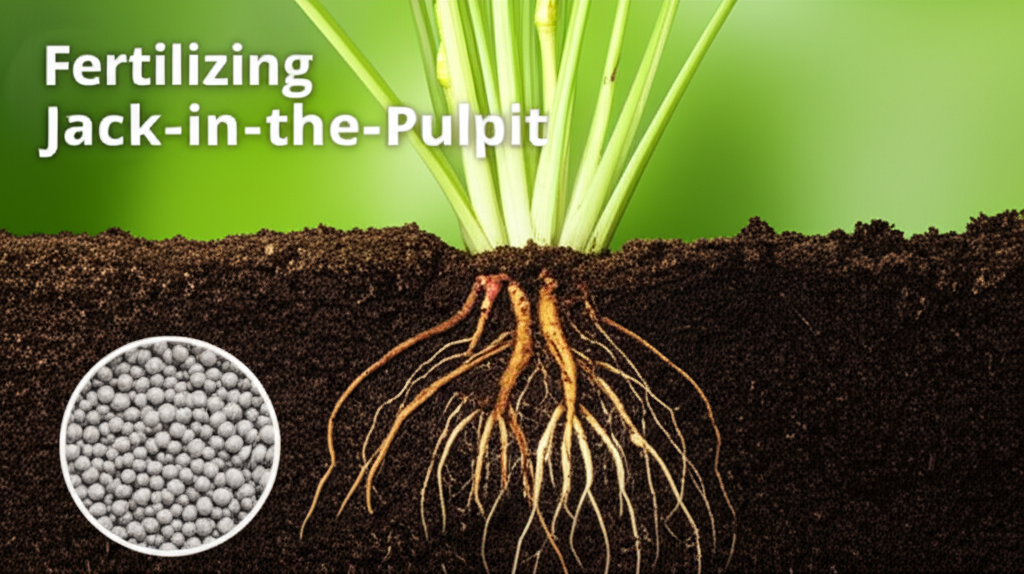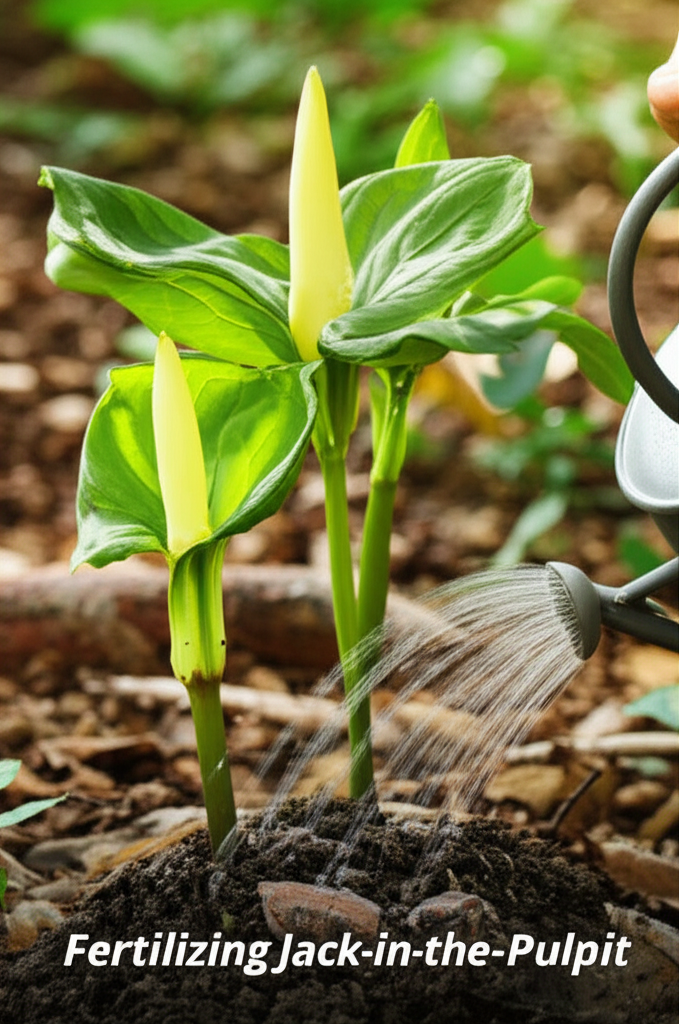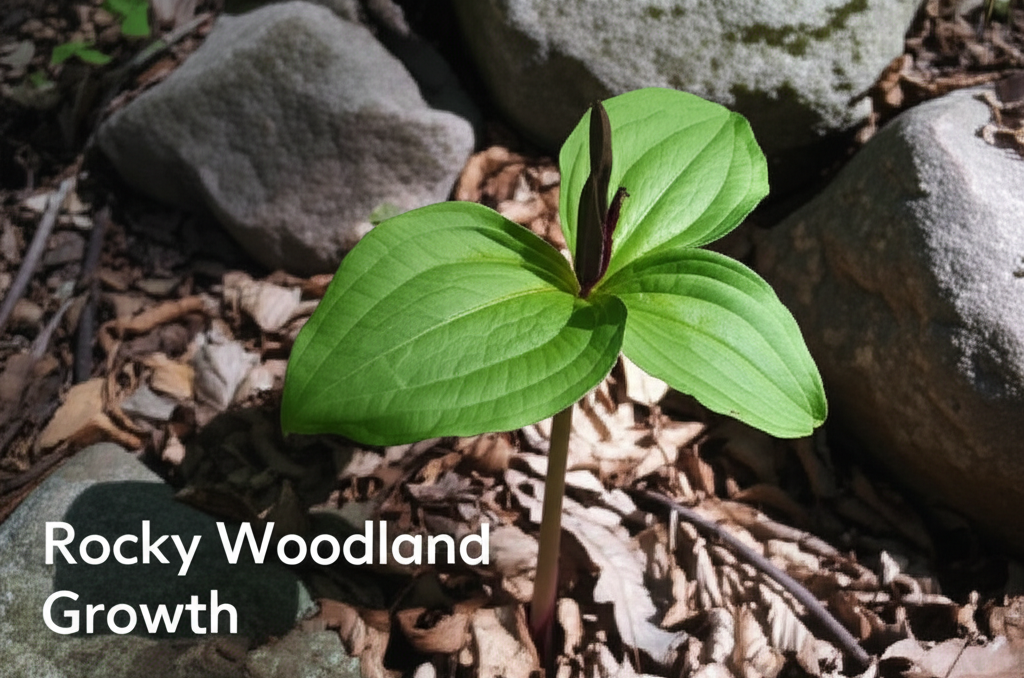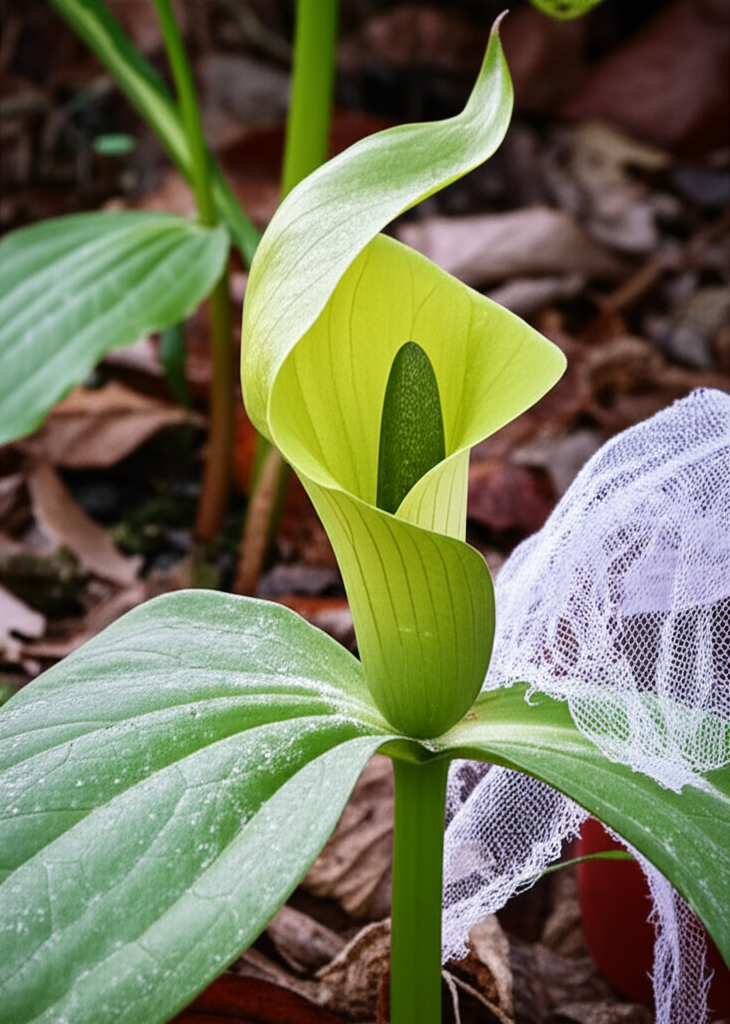Jack-in-the-Pulpit (Arisaema triphyllum) is a captivating native woodland perennial, prized for its unique floral structure and woodland charm. While it thrives in the dappled shade and rich, moist soils of its natural habitat, understanding how to fertilize this distinctive plant can significantly enhance its vigor, bloom production, and overall health in your garden. This guide will delve into the best practices for fertilizing Jack-in-the-Pulpit, ensuring your plants flourish.
Understanding Jack-in-the-Pulpit’s Nutritional Needs
Jack-in-the-Pulpit, like many woodland natives, has adapted to a slow, steady release of nutrients from decomposing organic matter in its environment. This means it generally does not require heavy fertilization. Over-fertilization can actually be detrimental, leading to weak, leggy growth, increased susceptibility to pests and diseases, and even a failure to bloom. The goal is to supplement its natural environment, not to force rapid growth.
Key Nutritional Components
While not a heavy feeder, Jack-in-the-Pulpit benefits from a balanced supply of essential nutrients:
- Nitrogen (N): Promotes leafy green growth. In moderation, it supports the foliage that fuels the corm.
- Phosphorus (P): Crucial for root development, flowering, and overall plant energy.
- Potassium (K): Aids in disease resistance, water regulation, and general plant hardiness.
Micronutrients, while required in smaller amounts, are also important for healthy plant function. A rich, organic soil typically provides these.
When to Fertilize Jack-in-the-Pulpit

The timing of fertilization is as critical as the type of fertilizer used. For Jack-in-the-Pulpit, the primary fertilization window is in the early spring, just as the plant begins to emerge from dormancy. A secondary, lighter feeding can be considered in the late spring or early summer after the bloom has faded and the plant is focusing its energy on developing its foliage and replenishing its corm for the following year.
Ideal Fertilization Schedule
- Early Spring (March/April): This is the most important time to fertilize. As the first shoots emerge, a light application of organic matter or a balanced, slow-release fertilizer can provide the necessary nutrients for vigorous growth and blooming.
- Late Spring/Early Summer (May/June): Once the flower spathe has faded and the attractive berry-like fruits begin to develop (or if the plant is producing its distinctive leaf clusters), a very light feeding can be beneficial. This helps the plant store energy in its corm for the following season. Avoid fertilizing after the foliage begins to yellow and die back in late summer or fall, as this can encourage new growth that won’t have time to harden off before winter.
Types of Fertilizers for Jack-in-the-Pulpit
The best approach to fertilizing Jack-in-the-Pulpit is to mimic its natural environment by using organic amendments. These provide nutrients slowly and improve soil structure, which is beneficial for this woodland native.
Organic Fertilizers and Amendments
- Compost: Well-rotted compost is the gold standard for fertilizing Jack-in-the-Pulpit. It provides a slow release of nutrients, improves soil aeration, water retention, and introduces beneficial microorganisms. Top-dressing the soil around the plant with a 1-2 inch layer of compost in early spring is highly effective.
- Aged Manure: Similar to compost, well-aged cow, horse, or chicken manure (composted) can be a valuable amendment. Ensure it is thoroughly composted to avoid burning the plant’s roots.
- Leaf Mold: Decomposed leaves create a nutrient-rich soil conditioner that is perfect for woodland plants.
- Worm Castings: These are a highly concentrated, nutrient-rich organic fertilizer that can be lightly sprinkled around the plant.
- Slow-Release Organic Fertilizers: Look for commercially available organic fertilizers formulated for perennials or woodland plants. These are often derived from bone meal, blood meal, feather meal, or kelp meal, providing a balanced nutrient profile that releases slowly over time.
When to Consider Synthetic Fertilizers
Synthetic fertilizers should be used with extreme caution, if at all. If you choose to use them, opt for a balanced, slow-release formula with a low N-P-K ratio (e.g., 5-5-5 or 10-10-10). Apply them very sparingly, following the package directions for a significantly smaller application rate than recommended for more vigorous garden plants. The risk of burning the roots or causing nutrient imbalances is much higher with synthetics.
How to Apply Fertilizer
The method of application is as important as the type of fertilizer. Proper application ensures that the nutrients reach the plant’s root system without causing damage.
Application Techniques
- Clear Debris: Gently clear away any fallen leaves or debris from around the base of the Jack-in-the-Pulpit plant in early spring, being careful not to disturb emerging shoots.
- Apply Organic Matter: Spread a 1-2 inch layer of compost, aged manure, or leaf mold around the plant, keeping it a few inches away from the immediate stem. This will gradually break down and release nutrients into the soil.
- Apply Granular Fertilizer (if used): If using a slow-release granular fertilizer, lightly sprinkle it over the soil surface around the plant, following package instructions for a diluted application. Again, avoid direct contact with the plant stem.
- Water In: After applying any fertilizer or amendment, water the area thoroughly. This helps to dissolve granular fertilizers and begin the integration of organic matter into the soil.
Fertilizing Container-Grown Jack-in-the-Pulpit
If you are growing Jack-in-the-Pulpit in containers, the fertilization strategy will differ slightly. Container plants have a limited soil volume and their nutrients can leach out more quickly with watering.
- Use a High-Quality Potting Mix: Start with a well-draining potting mix that includes compost.
- Fertilize Sparingly: In early spring, you can use a diluted liquid organic fertilizer (like fish emulsion or kelp extract) at half strength.
- Frequency: Depending on the potting mix and watering frequency, you might fertilize every 4-6 weeks during the growing season with a very dilute solution. Always follow the product’s instructions.
Key Considerations for Fertilizing
Several factors can influence how you approach fertilizing your Jack-in-the-Pulpit.
Soil Type and pH
Jack-in-the-Pulpit prefers slightly acidic to neutral soil, with a pH range of approximately 5.5 to 7.0. Most soils that support woodland plants will naturally fall within this range. Amending with compost will help buffer soil pH and improve its structure, which is beneficial regardless of the starting pH. Avoid overly alkaline soils.
Moisture Levels
Proper moisture is crucial for nutrient uptake. Ensure the soil remains consistently moist but not waterlogged. Fertilizing dry soil can stress the plant and damage roots. Always water thoroughly after fertilizing.
Sunlight Exposure
While this guide focuses on fertilization, it’s worth noting that Jack-in-the-Pulpit thrives in dappled shade or partial shade. Plants grown in too much sun may become stressed, which can affect their response to fertilization.
Troubleshooting and Common Issues
Even with careful fertilization, issues can arise. Understanding these can help you adjust your approach.
Yellowing Leaves
Yellowing leaves in Jack-in-the-Pulpit can be caused by several factors:
- Natural Senescence: The foliage naturally yellows and dies back after flowering and fruiting, typically in late summer. This is normal.
- Under-Fertilization: If the plant appears generally weak and the yellowing occurs earlier in the season, it might indicate a lack of nutrients.
- Over-Watering or Poor Drainage: This can lead to root rot and nutrient deficiency symptoms.
- Over-Fertilization: While less common, excessive synthetic fertilizer can burn roots and cause yellowing.
If you suspect under-fertilization, a light application of compost in the early spring is the safest bet. If over-watering is suspected, focus on improving drainage.
Lack of Blooms
Several factors can contribute to a lack of blooming:
- Young Plants: Jack-in-the-Pulpit needs a few years to establish its corm before it will reliably bloom.
- Insufficient Light: While they prefer shade, very deep shade can reduce flowering.
- Nutrient Imbalance: Too much nitrogen can promote leafy growth at the expense of flowers.
- Dormancy Issues: Ensure the plant has a proper dormancy period.
If your plant is established and healthy but not blooming, ensure it is receiving adequate light and consider a light feeding of compost in early spring.
Comparing Fertilization Methods
Here’s a look at the key differences and benefits of various fertilization approaches for Jack-in-the-Pulpit:
| Method | Nutrient Release | Soil Improvement | Risk of Over-Fertilization | Best For |
|---|---|---|---|---|
| Compost Top-Dressing | Slow & Gradual | Excellent | Very Low | All Jack-in-the-Pulpit, especially established plants |
| Aged Manure | Slow & Gradual | Good | Low (if well-composted) | Establishing new plants, general enrichment |
| Organic Granular Fertilizer | Slow & Controlled | Minimal | Moderate | Supplementing compost, when compost alone isn’t enough |
| Synthetic Granular Fertilizer (Low NPK, Diluted) | Variable (slow-release specific) | None | High | Rarely recommended; only if other methods fail and with extreme caution |
| Liquid Organic Fertilizer (Diluted) | Quick (for a short period) | Minimal | Moderate | Container-grown plants, quick boost if needed |
Step-by-Step Fertilization Process and Pros/Cons
To summarize the process and weigh the advantages and disadvantages of different approaches:
| Step/Method | Description | Pros | Cons |
|---|---|---|---|
| 1. Assess Soil & Plant Health | Examine existing soil, drainage, and plant vigor before applying anything. | Prevents unnecessary or harmful interventions. | Requires observation and knowledge. |
| 2. Early Spring Top-Dressing (Primary Method) | Apply 1-2 inches of compost or well-rotted manure around the base. | Natural, improves soil structure, slow nutrient release, low risk. | Nutrient levels may not be high enough for severely depleted soils. |
| 3. Light Late Spring Feeding (Optional) | If plant appears weak after flowering, a very light application of compost or diluted liquid organic fertilizer. | Can provide a needed boost for struggling plants. | Risk of overdoing it if not careful; unnecessary for healthy plants. |
| 4. Avoid Fall Fertilization | Do not fertilize after foliage begins to decline. | Prevents weak new growth that can be damaged by frost. | Requires discipline not to “feed” the plant for winter. |
| 5. Use of Synthetic Fertilizers (Last Resort) | If using, select a balanced, slow-release type with low NPK, applied at a fraction of the recommended rate. | Can provide a quick nutrient boost if organic methods are insufficient. | High risk of root burn, nutrient imbalance, and harm to beneficial soil organisms. Not recommended for this species. |
Conclusion
Fertilizing Jack-in-the-Pulpit is a subtle art, best approached with a focus on organic enrichment and mimicking its natural woodland environment. By providing a top-dressing of compost in early spring and exercising restraint, you can ensure your Jack-in-the-Pulpit plants thrive, exhibiting their unique beauty and captivating presence in your garden for years to come. Remember that healthy soil and appropriate growing conditions are the foundation of a successful Jack-in-the-Pulpit, with fertilization serving as a beneficial supplement rather than a primary driver of growth.


